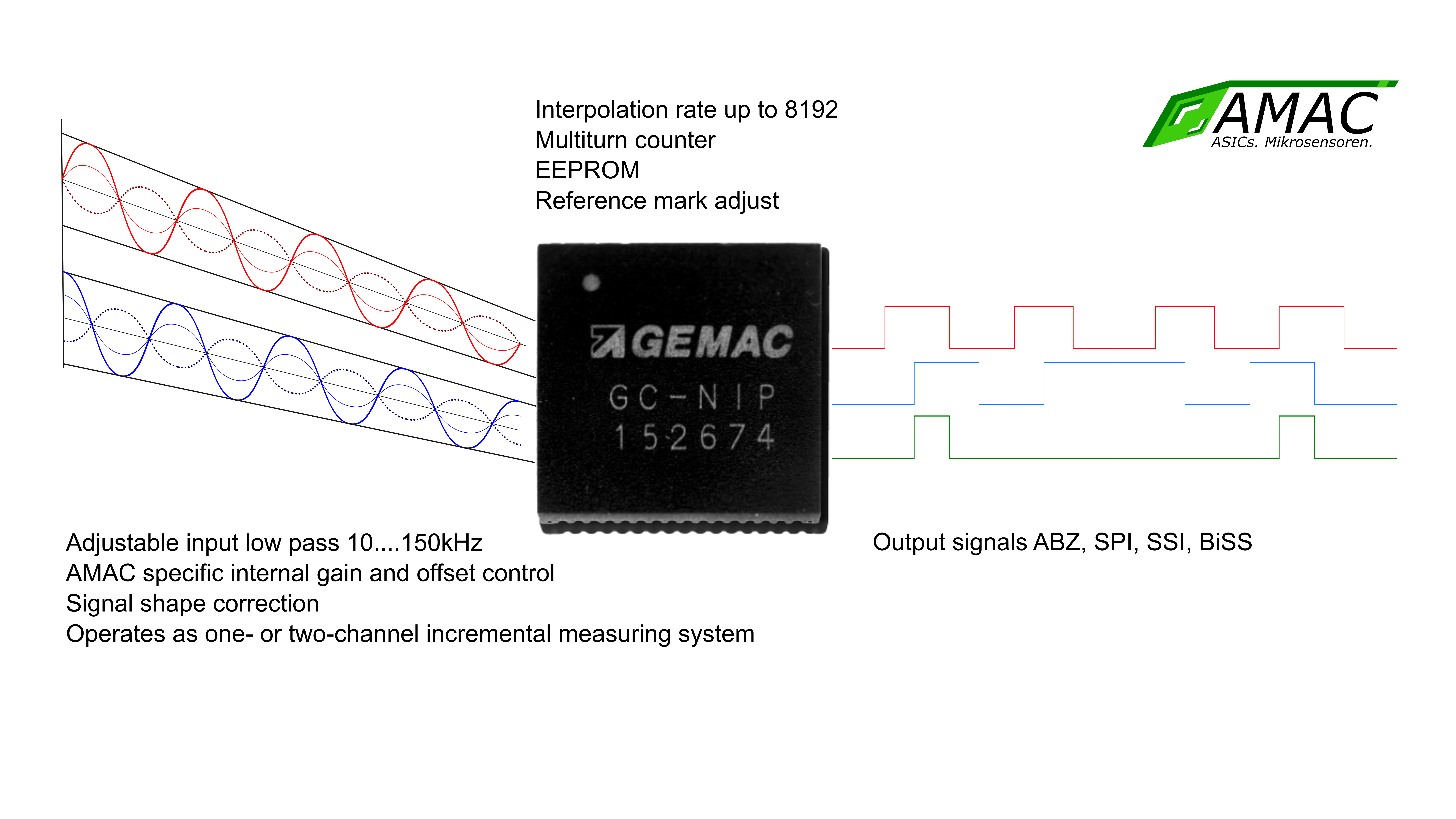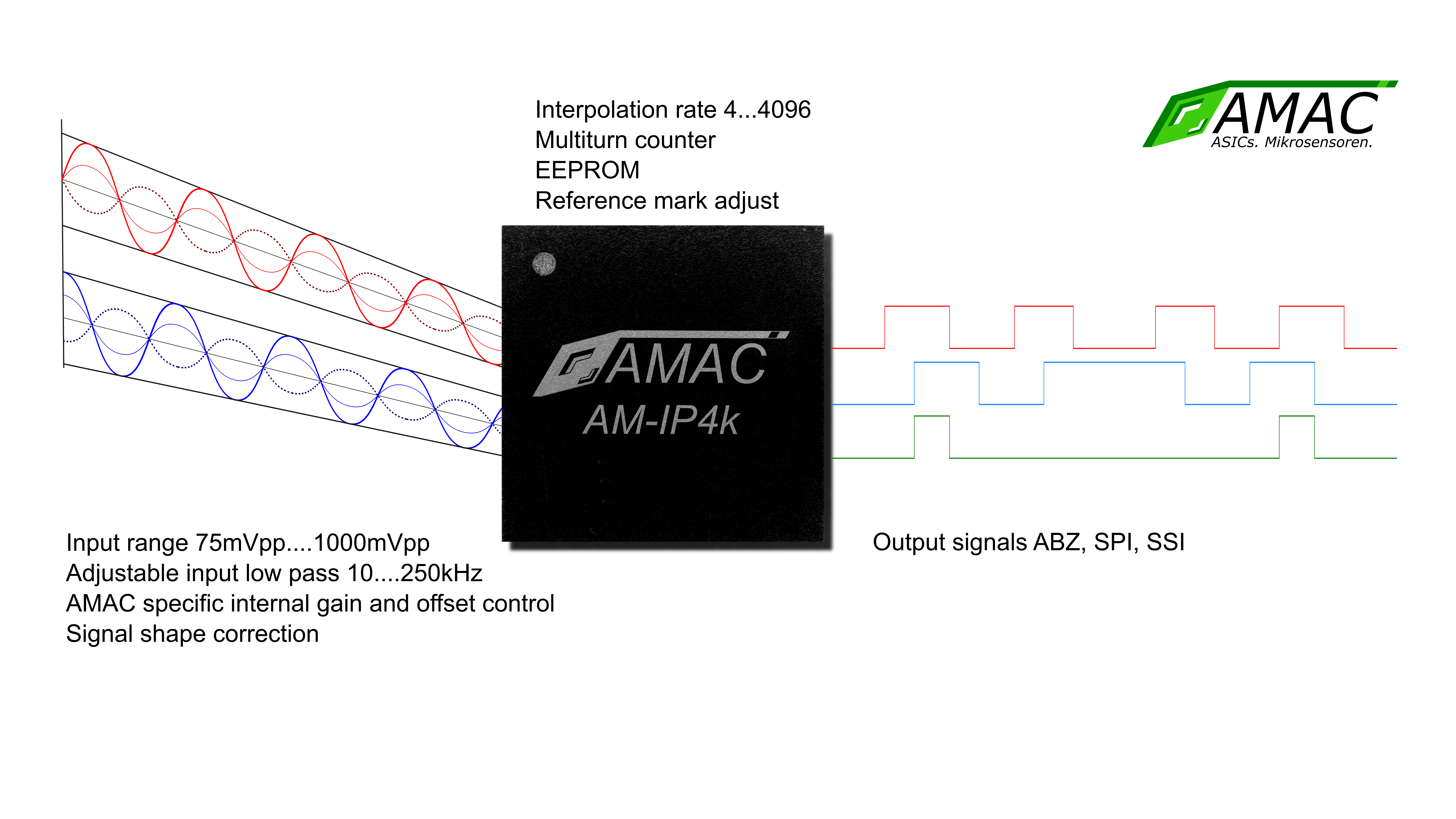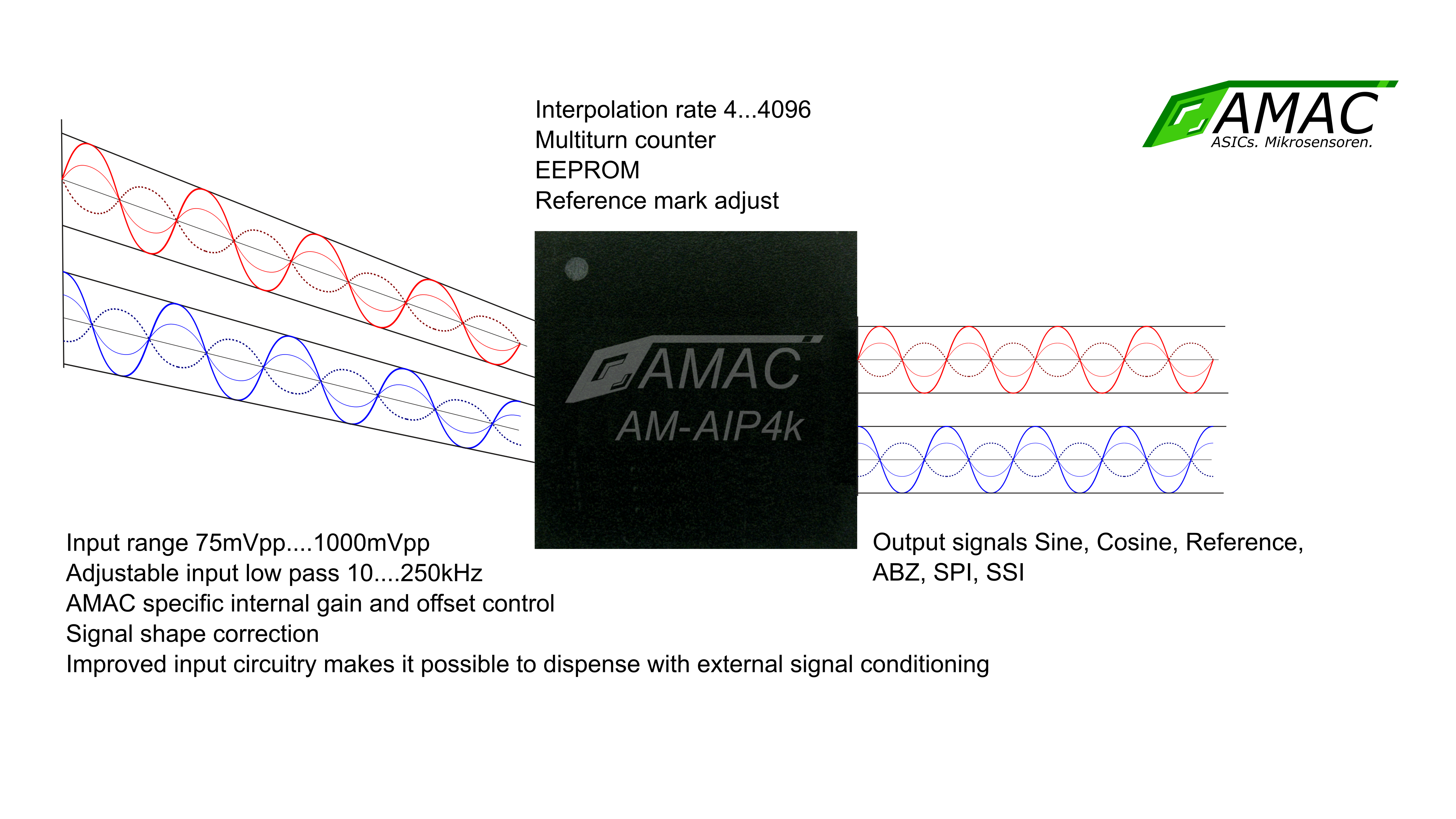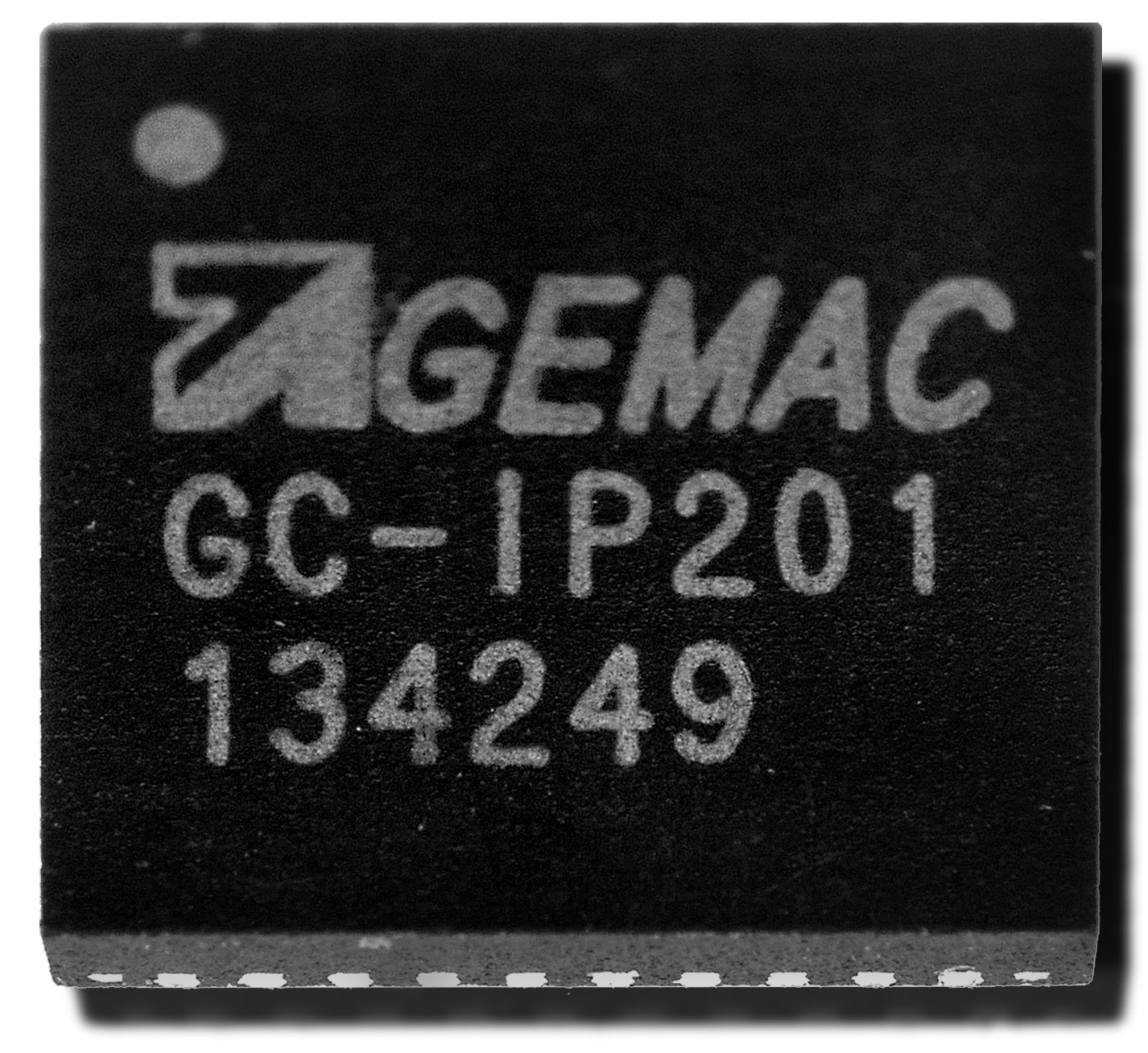It pays off to be prepared – find out about all exhibiting companies and the entire product range that will be presented at the SPS this year. This will help you to get in touch with the right business partners.
Here you can find the exhibitors at the SPS 2025. This online search gives you an overview of the participating companies and will be updated regularly.
Use the various filter functions to search for specific product groups, halls, contact information and much more. The filters can also be combined with each other in any way, so that you can adapt the search to your individual criteria.
Exhibitor search SPS 2025
2-Channel-Interpolation Circuit with Nonius Calculation GC-NIP
Description
The two-channel nonius interpolation circuit GC-NIP is used to increase the resolution for absolute distance and angle measuring systems with 2 sinusoidal output signals (vernier signals) shifted by 90 ° and to calculate the absolute position of the sensor from the two vernier signals. One or two-channel incremental position or angle measuring systems can also be connected to the GC-NIP, which enables it to be used as a two-channel encoder. The signals from the sensors are subjected to an internal gain and offset control patented by AMAC and then interpolated up to 8192 times. When calculating the absolute position, resolutions of up to 22 bits can be achieved with 2-track vernier systems. The GC-NIP is designed for 3.3V interfaces on both the input and output sides. It contains six instrumentation amplifiers with adjustable gain factors. Sensors with a voltage interface and measuring bridges can be connected directly. Sensors with a current interface or photodiode arrays are adapted using simple external wiring. The IC can work with both single-ended and differential input signals. An adjustable analog low-pass filter reduces the noise of the sensor signals. In addition, a digital hysteresis can suppress the edge noise of the output signals at low input frequencies and at standstill. In the GC-NIP, the signal quality of the sensors is monitored using nine criteria. To calculate the vernier position, a set of sensor or scale-specific correction coefficients can be stored in the IC's EEPROM so that harmonics of the sinusoidal signals or inaccuracies in the measuring standard do not lead to errors in the vernier calculation. The correction coefficients are determined using a simple software-based calibration process. The GC-NIP is particularly suitable for use in motor feedback systems, as both absolute position and incremental ABZ signals are generated. The four implemented output interfaces (ABZ / SPI / SSI / BiSS) and other features, such as the options for calibrating the reference point, setting and saving the zero position or support in evaluating distance-coded reference marks, allow the GC-NIP to be used directly on industrial controls . The IC is configured application-specifically from an integrated EEPROM, via configuration inputs or via the serial interface (SPI / BiSS).
Address
AMAC ASIC - und Mikrosensoranwendung Chemnitz GmbH
Kopernikusstr. 16
09117 Chemnitz
Germany
Telephone+49 371 3342040




